Abstract
1. The ribosome content of the rat ventral prostate gland is controlled by the concentrations of circulating androgens and the polyribosomal complement of the total population of ribosomes is acutely dependent on androgenic stimulation. After the administration of testosterone to castrated rats in vivo, there is a pronounced increase in the amounts of heavy (150–240S) polyribosomes. 2. These results are consistent with a pronounced increase in the mRNA and rRNA content of the prostate gland after the administration of testosterone in vivo. 3. From studies conducted both in vitro, the heavy prostate polyribosomes formed after androgenic stimulation are particularly active in protein synthesis. 4. The androgen-stimulated increase in the formation of prostate polyribosomes has a mandatory requirement for sustained RNA and protein synthesis. 5. Since the androgen-mediated increase in prostate polyribosomes may also be suppressed by the concomitant administration of certain anti-androgenic steroids in vivo, the response in polyribosome formation is probably initiated by the binding of a metabolite of testosterone, 5α-dihydrotestosterone, in the prostate gland. 6. The relevance of these findings to the pronounced increase in protein synthesis in androgen-dependent tissues after hormonal stimulation is discussed.
Full text
PDF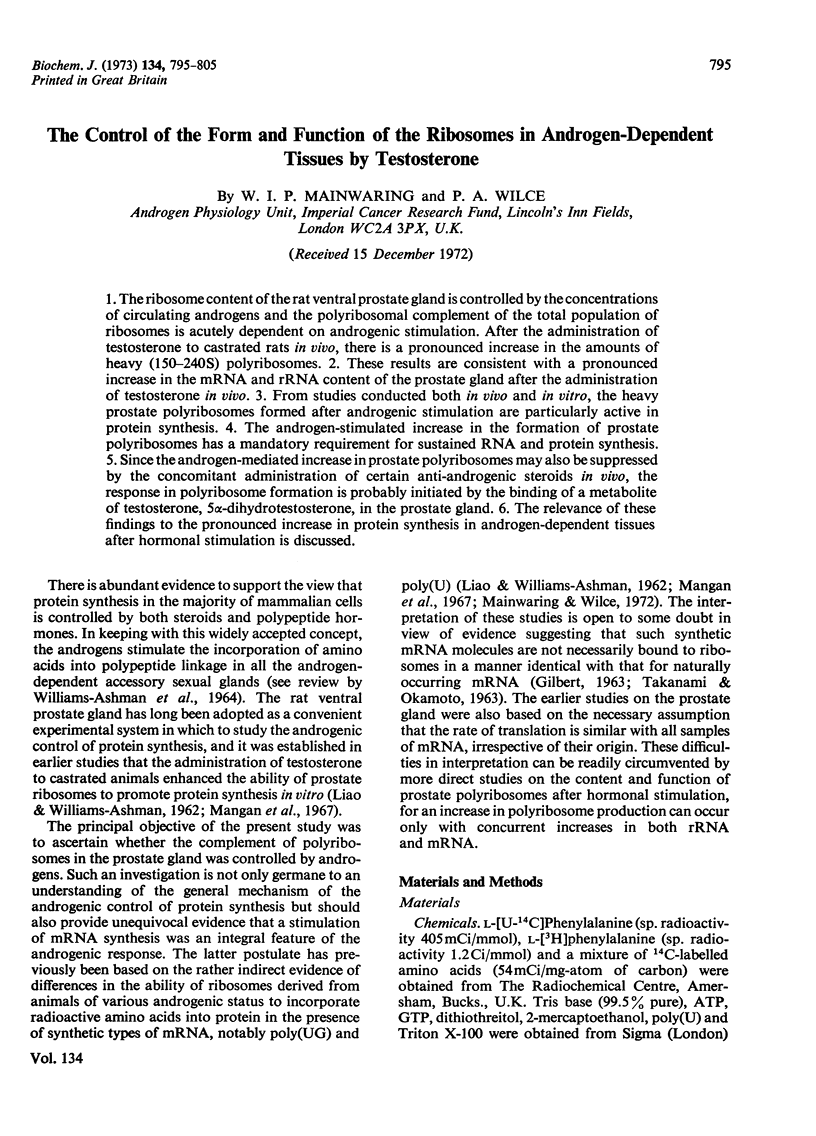
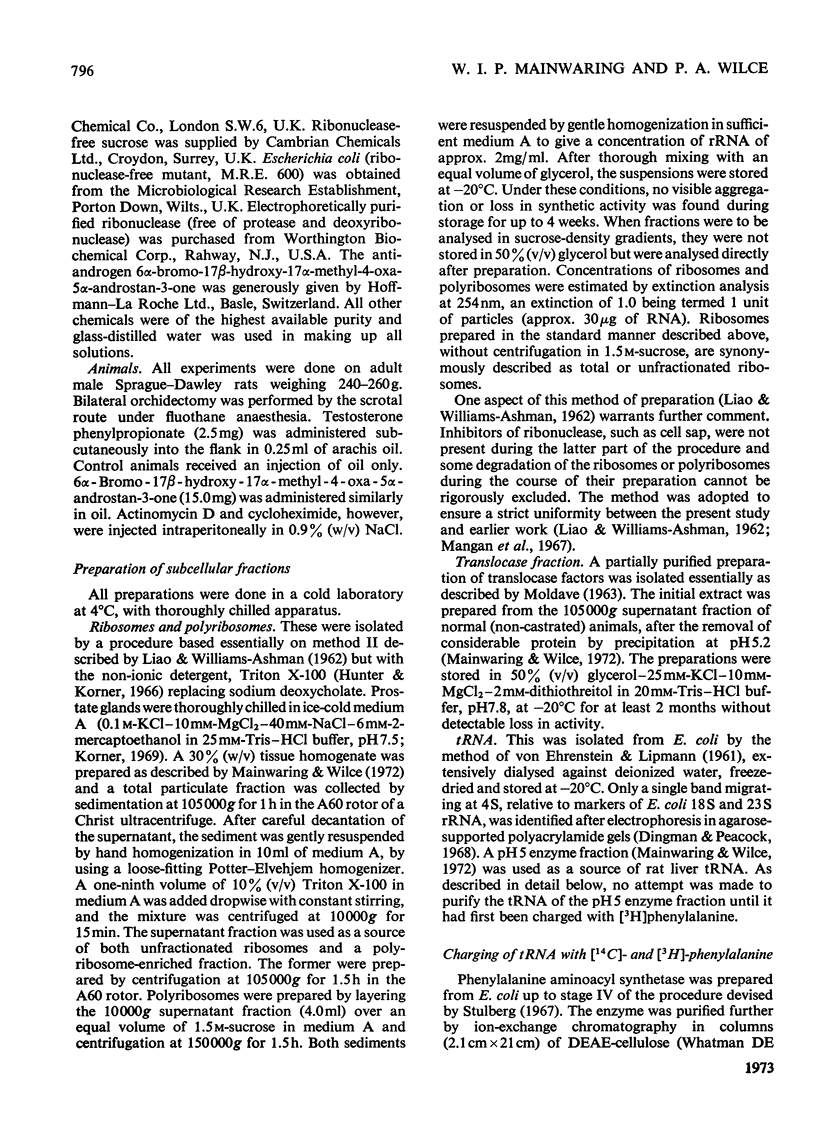
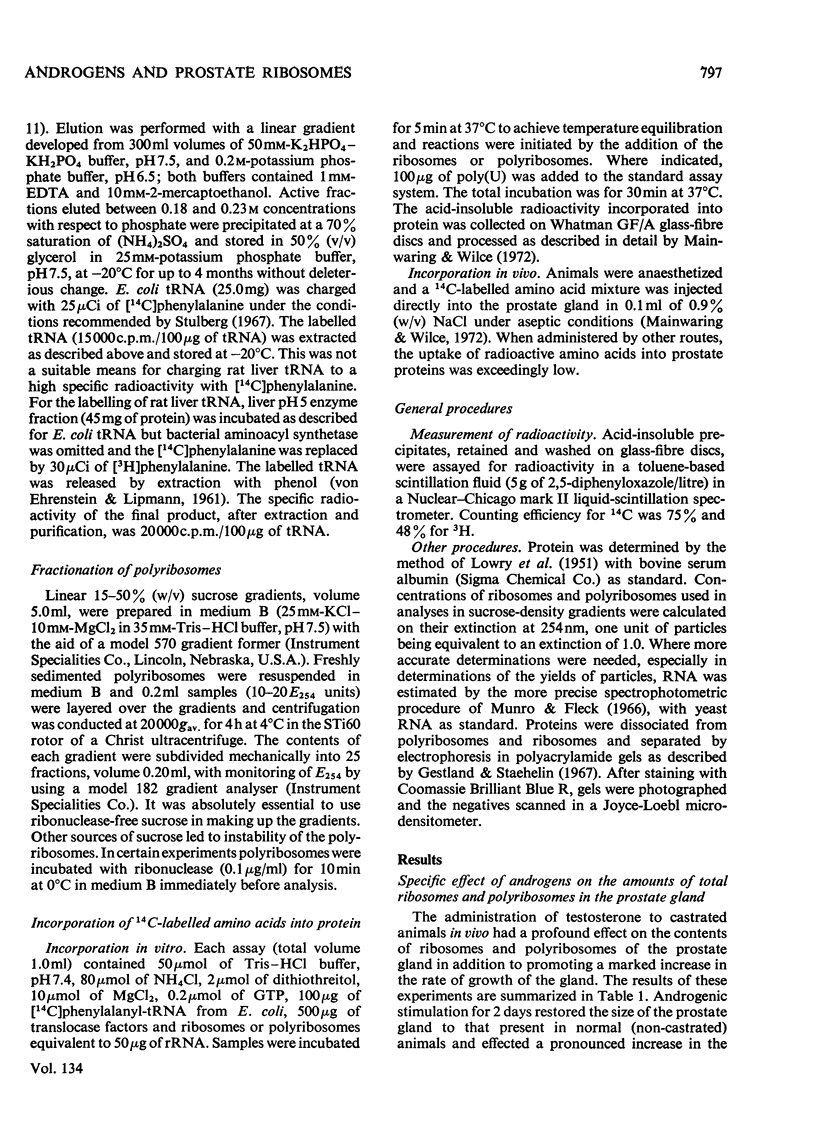
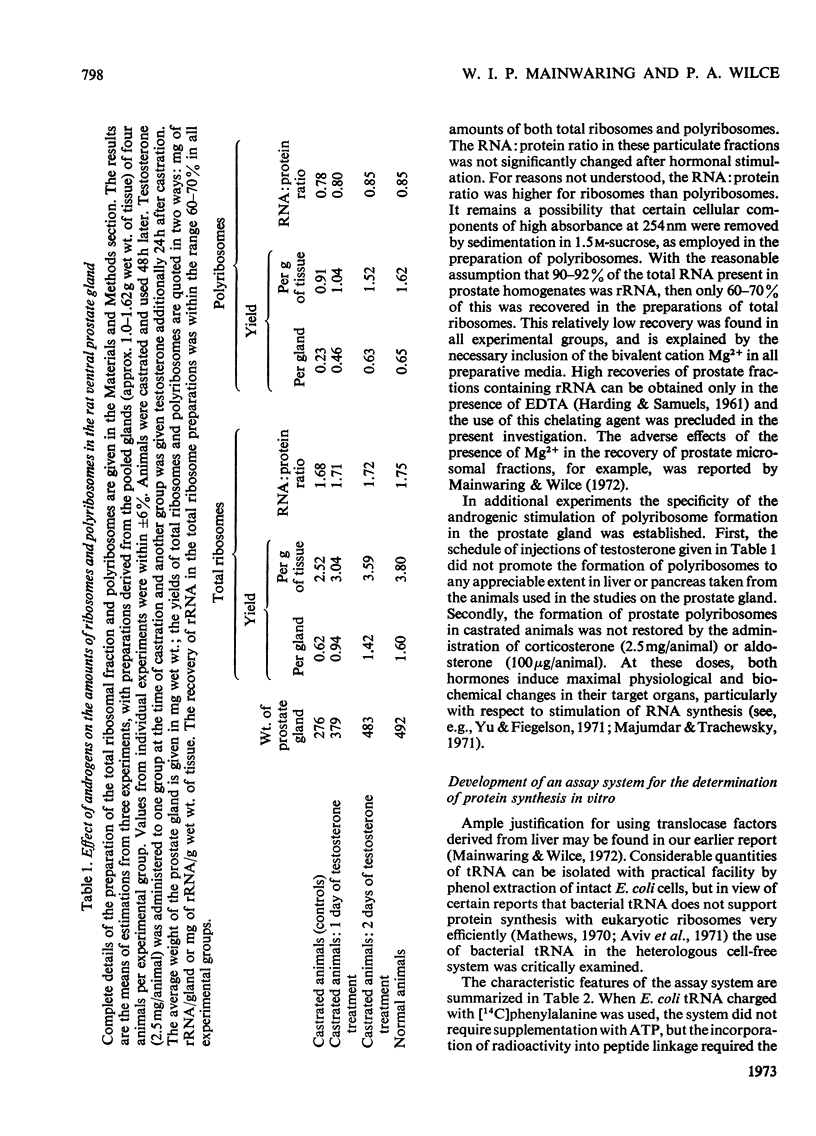
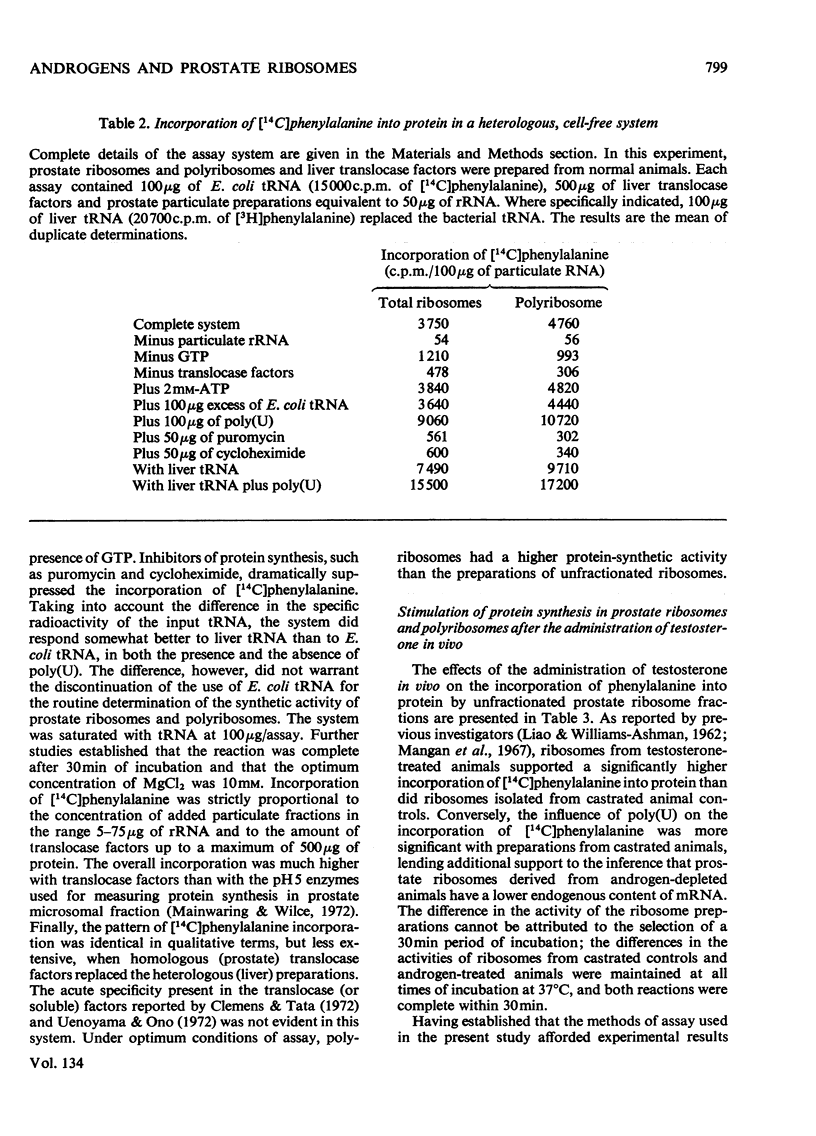
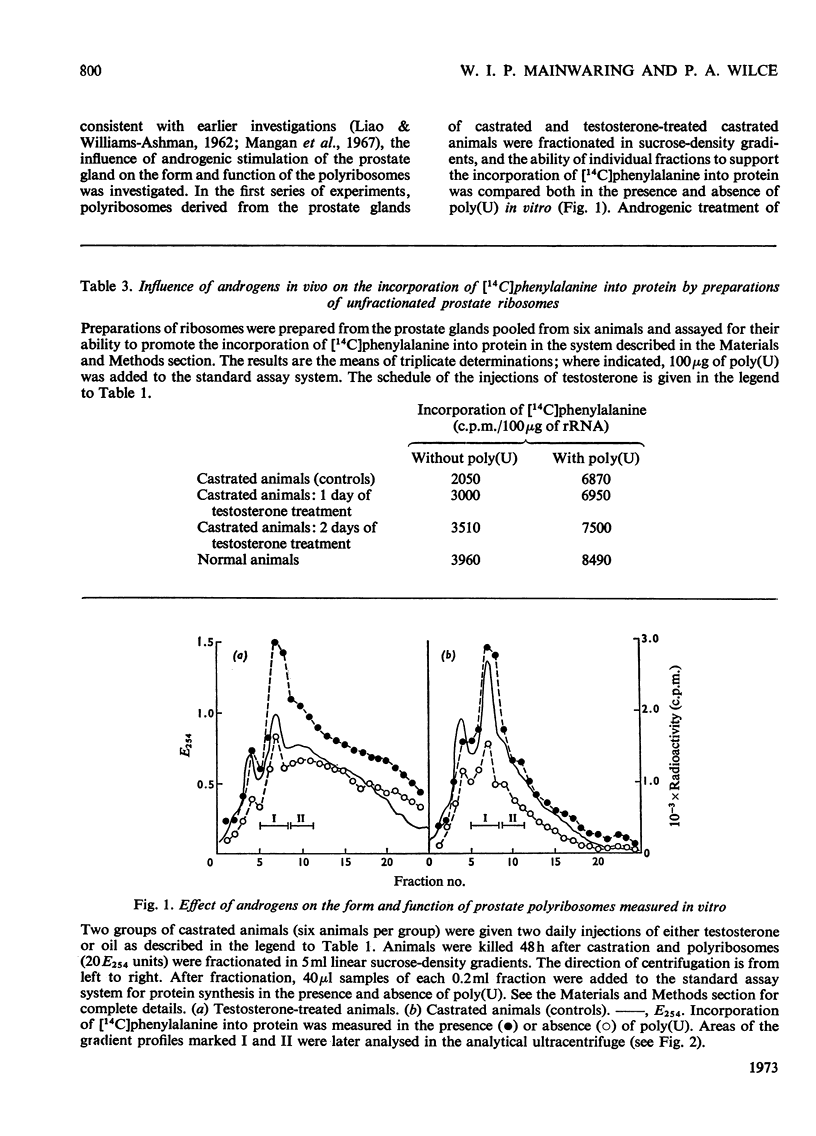
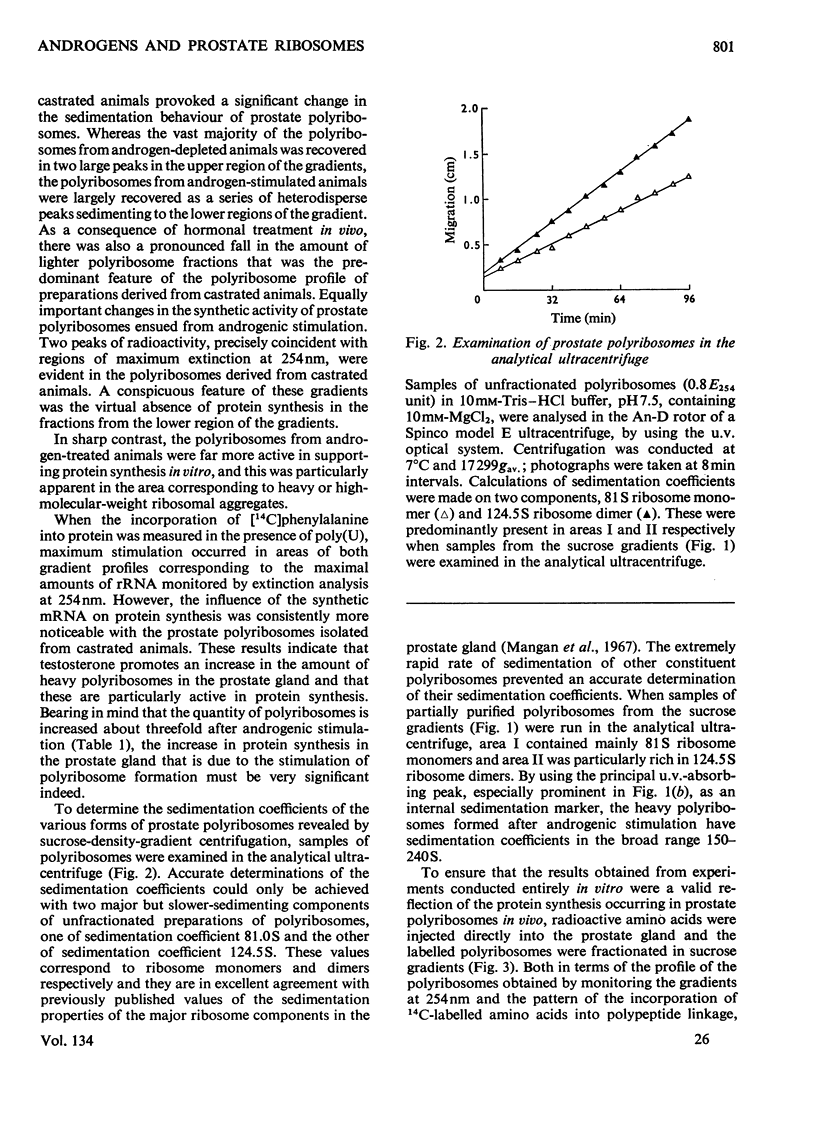
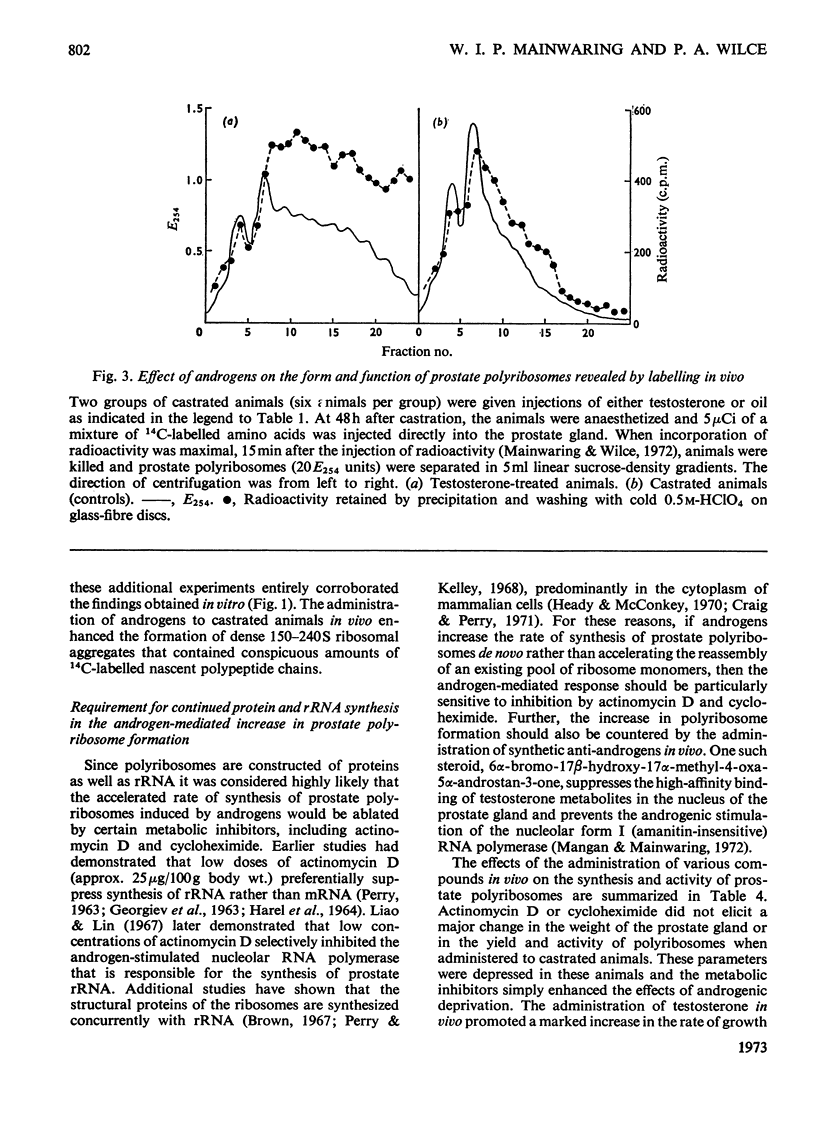
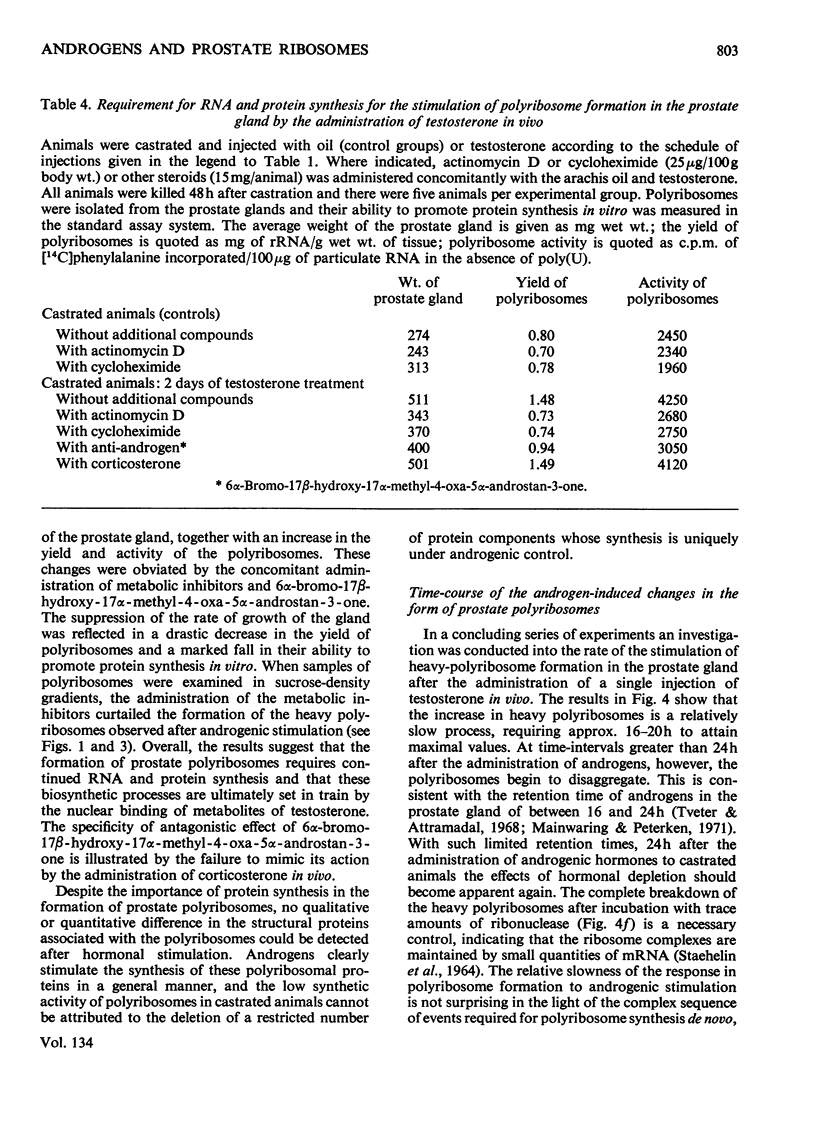
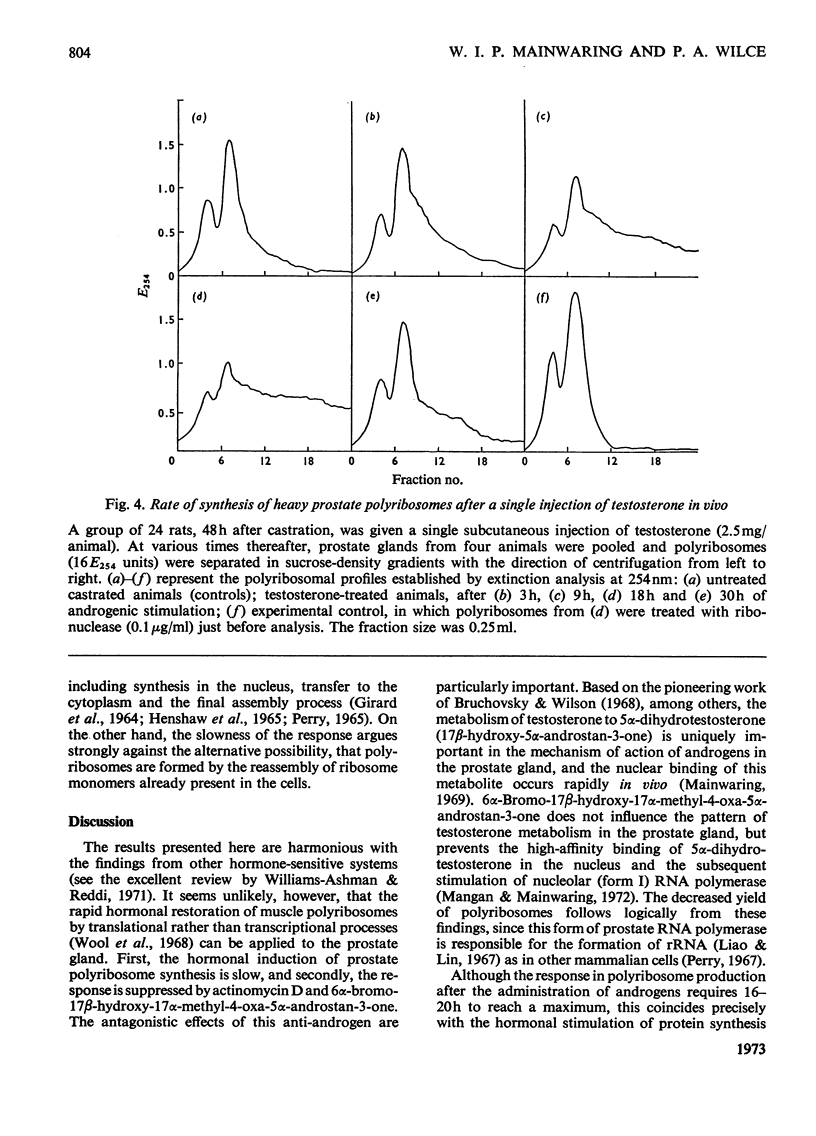
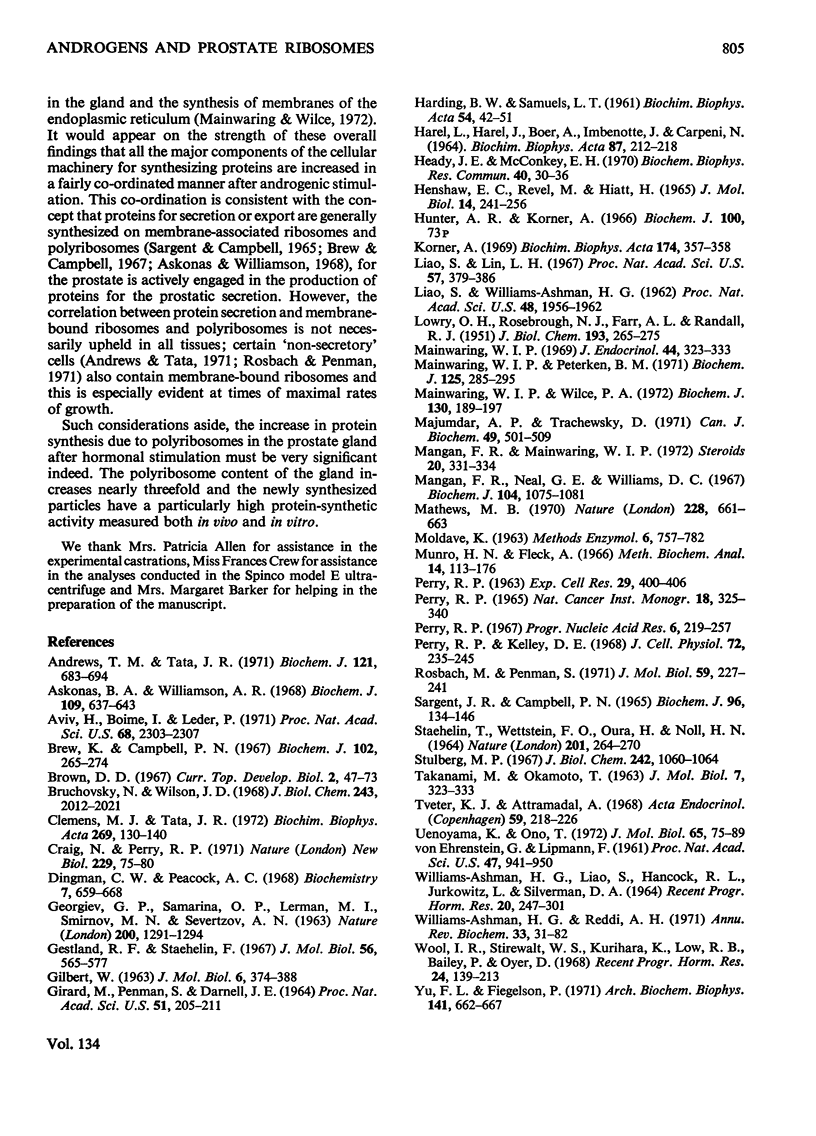
Selected References
These references are in PubMed. This may not be the complete list of references from this article.
- Andrews T. M., Tata J. R. Protein synthesis by membrane-bound and free ribosomes of secretory and non-secretory tissues. Biochem J. 1971 Feb;121(4):683–694. doi: 10.1042/bj1210683. [DOI] [PMC free article] [PubMed] [Google Scholar]
- Askonas B. A., Williamson A. R. Interchain disulphide-bond formation in the assembly of immunoglobulin G. Heavy-chain dimer as an intermediate. Biochem J. 1968 Oct;109(4):637–643. doi: 10.1042/bj1090637. [DOI] [PMC free article] [PubMed] [Google Scholar]
- Aviv H., Boime I., Leder P. Protein synthesis directed by encephalomyocarditis virus RNA: properties of a transfer RNA-dependent system. Proc Natl Acad Sci U S A. 1971 Sep;68(9):2303–2307. doi: 10.1073/pnas.68.9.2303. [DOI] [PMC free article] [PubMed] [Google Scholar]
- Brew K., Campbell P. N. Studies on the biosynthesis of protein by lactating guinea-pig mammary gland. Characteristics of the synthesis of alpha-lactalbumin and total protein by slices and cell-free systems. Biochem J. 1967 Jan;102(1):265–274. doi: 10.1042/bj1020265. [DOI] [PMC free article] [PubMed] [Google Scholar]
- Brown D. D. The genes for ribosomal RNA and their transcription during amphibian development. Curr Top Dev Biol. 1967;2:47–73. doi: 10.1016/s0070-2153(08)60283-5. [DOI] [PubMed] [Google Scholar]
- Bruchovsky N., Wilson J. D. The conversion of testosterone to 5-alpha-androstan-17-beta-ol-3-one by rat prostate in vivo and in vitro. J Biol Chem. 1968 Apr 25;243(8):2012–2021. [PubMed] [Google Scholar]
- Clemens M. J., Tata J. R. Specific cell sap requirement for peptide chain initiation in a cell-free system prepared from Xenopus laevis liver. Biochim Biophys Acta. 1972 Apr 26;269(1):130–140. doi: 10.1016/0005-2787(72)90080-9. [DOI] [PubMed] [Google Scholar]
- Craig N., Perry R. P. Persistent cytoplasmic synthesis of ribosomal proteins during the selective inhibition of ribosomal RNA synthesis. Nat New Biol. 1971 Jan 20;229(3):75–80. doi: 10.1038/newbio229075a0. [DOI] [PubMed] [Google Scholar]
- Dingman C. W., Peacock A. C. Analytical studies on nuclear ribonucleic acid using polyacrylamide gel electrophoresis. Biochemistry. 1968 Feb;7(2):659–668. doi: 10.1021/bi00842a022. [DOI] [PubMed] [Google Scholar]
- GEORGIEV G. P., SAMARINA O. P., LERMAN M. I., SMIRNOV M. N., SEVERTZOV A. N. BIOSYNTHESIS OF MESSENGER AND RIBOSOMAL RIBONUCLEIC ACIDS IN THE NUCLEOLOCHROMOSOMAL APPARATUS OF ANIMAL CELLS. Nature. 1963 Dec 28;200:1291–1294. doi: 10.1038/2001291a0. [DOI] [PubMed] [Google Scholar]
- GILBERT W. Polypeptide synthesis in Escherichia coli. I. Ribosomes and the active complex. J Mol Biol. 1963 May;6:374–388. doi: 10.1016/s0022-2836(63)80050-9. [DOI] [PubMed] [Google Scholar]
- GIRARD M., PENMAN S., DARNELL J. E. THE EFFECT OF ACTINOMYCIN ON RIBOSOME FORMATION IN HELA CELLS. Proc Natl Acad Sci U S A. 1964 Feb;51:205–211. doi: 10.1073/pnas.51.2.205. [DOI] [PMC free article] [PubMed] [Google Scholar]
- HARDING B. W., SAMUELS L. T. A tissue fractionation study of rat ventral prostate: subcellular distribution of nucleic acids, succinate oxidizing systems, cytochrome c reductases, cytochrome oxidase and acid phosphatase. Biochim Biophys Acta. 1961 Nov 25;54:42–51. doi: 10.1016/0006-3002(61)90935-0. [DOI] [PubMed] [Google Scholar]
- HAREL L., HAREL J., BOER A., IMBENOTTE J., CARPENI N. PERSISTANCE D'UNE SYNTH'ESE DE D-RNA DANS LE FOIE DE RAT TRAIT'E PAR L'ACTINOMYCINE. Biochim Biophys Acta. 1964 Jun 22;87:212–218. [PubMed] [Google Scholar]
- Heady J. E., McConkey E. H. Completion of nascent HeLa ribosomal proteins in a cell-free system. Biochem Biophys Res Commun. 1970 Jul 13;40(1):30–36. doi: 10.1016/0006-291x(70)91041-7. [DOI] [PubMed] [Google Scholar]
- Henshaw E. C., Revel M., Hiatt H. H. A cytoplasmic particle bearing messenger ribonucleic acid in rat liver. J Mol Biol. 1965 Nov;14(1):241–256. doi: 10.1016/s0022-2836(65)80244-3. [DOI] [PubMed] [Google Scholar]
- Knox K. W. The relation of 3-deoxy-2-oxo-octonate to the serological and physical properties of a lipopolysaccharide from a rough strain of Escherichia coli. Biochem J. 1966 Jul;100(1):73–78. doi: 10.1042/bj1000073. [DOI] [PMC free article] [PubMed] [Google Scholar]
- Korner A. The effect of growth hormone on protein synthesis in the absence of peptide chain initiation. Biochim Biophys Acta. 1969 Jan 21;174(1):351–358. doi: 10.1016/0005-2787(69)90260-3. [DOI] [PubMed] [Google Scholar]
- LIAO S., WILLIAMS-ASHMAN H. G. An effect of testosterone on amino acid incorporation by prostatic ribonucleoprotein particles. Proc Natl Acad Sci U S A. 1962 Nov 15;48:1956–1964. doi: 10.1073/pnas.48.11.1956. [DOI] [PMC free article] [PubMed] [Google Scholar]
- LOWRY O. H., ROSEBROUGH N. J., FARR A. L., RANDALL R. J. Protein measurement with the Folin phenol reagent. J Biol Chem. 1951 Nov;193(1):265–275. [PubMed] [Google Scholar]
- Liao S., Lin A. H. Prostatic nuclear chromatin: an effect of testosterone on the synthesis of ribonucleic Acid rich in cytidylyl(3',5')guanosine. Proc Natl Acad Sci U S A. 1967 Feb;57(2):379–386. doi: 10.1073/pnas.57.2.379. [DOI] [PMC free article] [PubMed] [Google Scholar]
- Mainwaring W. I., Peterken B. M. A reconstituted cell-free system for the specific transfer of steroid--receptor complexes into nuclear chromatin isolated from the rat ventral prostate gland. Biochem J. 1971 Nov;125(1):285–295. doi: 10.1042/bj1250285. [DOI] [PMC free article] [PubMed] [Google Scholar]
- Mainwaring W. I. The binding of (1,2-3H)testosterone within nuclei of the rat prostate. J Endocrinol. 1969 Jul;44(3):323–333. doi: 10.1677/joe.0.0440323. [DOI] [PubMed] [Google Scholar]
- Mainwaring W. I., Wilce P. A. Further studies on the stimulation of protein synthesis in androgen-dependent tissues by testosterone. Biochem J. 1972 Nov;130(1):189–197. doi: 10.1042/bj1300189. [DOI] [PMC free article] [PubMed] [Google Scholar]
- Majumdar A. P., Trachewsky D. Protein synthesis by ribosomes from rat kidney cortex: effect of aldosterone and bilateral adrenalectomy. Can J Biochem. 1971 May;49(5):501–509. doi: 10.1139/o71-075. [DOI] [PubMed] [Google Scholar]
- Mangan F. R., Mainwaring W. I. An explanation of the antiandrogenic properties of 6 -bromo-17 -hydroxy-17 -methyl-4-oxa-5 -androstane-3-one. Steroids. 1972 Sep;20(3):331–343. doi: 10.1016/0039-128x(72)90092-x. [DOI] [PubMed] [Google Scholar]
- Mangan F. R., Neal G. E., Williams D. C. The effects of diethylstilboestrol and castration on the nucleic acid and protein metabolism of rat prostate gland. Biochem J. 1967 Sep;104(3):1075–1081. doi: 10.1042/bj1041075. [DOI] [PMC free article] [PubMed] [Google Scholar]
- Mathews M. B. Tissue-specific factor required for the translation of a mammalian viral RNA. Nature. 1970 Nov 14;228(5272):661–663. doi: 10.1038/228661a0. [DOI] [PubMed] [Google Scholar]
- Perry R. P., Kelley D. E. Persistent synthesis of 5S RNA when production of 28S and 18S ribosomal RNA is inhibited by low doses of actinomycin D. J Cell Physiol. 1968 Dec;72(3):235–246. doi: 10.1002/jcp.1040720311. [DOI] [PubMed] [Google Scholar]
- Perry R. P. The nucleolus and the synthesis of ribosomes. Natl Cancer Inst Monogr. 1965 Dec;18:325–340. [PubMed] [Google Scholar]
- Perry R. P. The nucleolus and the synthesis of ribosomes. Prog Nucleic Acid Res Mol Biol. 1967;6:219–257. doi: 10.1016/s0079-6603(08)60528-0. [DOI] [PubMed] [Google Scholar]
- Rosbash M., Penman S. Membrane-associated protein synthesis of mammalian cells. I. The two classes of membrane-associated ribosomes. J Mol Biol. 1971 Jul 28;59(2):227–241. doi: 10.1016/0022-2836(71)90048-9. [DOI] [PubMed] [Google Scholar]
- SARGENT J. R., CAMPBELL P. N. THE SEQUENTIAL SYNTHESIS OF THE POLYPEPTIDE CHAIN OF SERUM ALBUMIN BY THE MICROSOME FRACTION OF RAT LIVER. Biochem J. 1965 Jul;96:134–146. doi: 10.1042/bj0960134. [DOI] [PMC free article] [PubMed] [Google Scholar]
- STAEHELIN T., WETTSTEIN F. O., OURA H., NOLL H. DETERMINATION OF THE CODING RATIO BASED ON MOLECULAR WEIGHT OF MESSENGER RIBONUCLEIC ACID ASSOCIATED WITH ERGOSOMES OF DIFFERENT AGGREGATE SIZE. Nature. 1964 Jan 18;201:264–270. doi: 10.1038/201264a0. [DOI] [PubMed] [Google Scholar]
- Stulberg M. P. The isolation and properties of phenylalanyl ribonucleic acid synthetase from Escherichia coli B. J Biol Chem. 1967 Mar 10;242(5):1060–1064. [PubMed] [Google Scholar]
- TAKANAMI M., OKAMOTO T. INTERACTION OF RIBOSOMES AND SYNTHETIC POLYRIBONUCLEOTIDES. J Mol Biol. 1963 Oct;7:323–333. doi: 10.1016/s0022-2836(63)80027-3. [DOI] [PubMed] [Google Scholar]
- Tveter K. J., Attramadal A. Selective uptake of radioactivity in rat ventral prostate following administration of testosterone-1,2-3H. Methodological considerations. Acta Endocrinol (Copenh) 1968 Oct;59(2):218–226. doi: 10.1530/acta.0.0590218. [DOI] [PubMed] [Google Scholar]
- Uenoyama K., Ono T. Nascent catalase and its messenger RNA on rat liver polyribosomes. J Mol Biol. 1972 Mar 14;65(1):75–89. doi: 10.1016/0022-2836(72)90493-7. [DOI] [PubMed] [Google Scholar]
- VON EHRENSTEIN G., LIPMANN F. Experiments on hemoglobin biosynthesis. Proc Natl Acad Sci U S A. 1961 Jul 15;47:941–950. doi: 10.1073/pnas.47.7.941. [DOI] [PMC free article] [PubMed] [Google Scholar]
- WILLIAMS-ASHMAN H. G., LIAO S., HANCOCK R. L., JURKOWITZ L., SILVERMAN D. A. TESTICULAR HORMONES AND THE SYNTHESIS OF RIBONUCLEIC ACIDS AND PROTEINS IN THE PROSTATE GLAND. Recent Prog Horm Res. 1964;20:247–301. [PubMed] [Google Scholar]
- Williams-Ashman H. G., Reddi A. H. Actions of vertebrate sex hormones. Annu Rev Physiol. 1971;33:31–82. doi: 10.1146/annurev.ph.33.030171.000335. [DOI] [PubMed] [Google Scholar]
- Wool I. G., Stirewalt W. S., Kurihara K., Low R. B., Bailey P., Oyer D. Mode of action of insulin in the regulation of protein biosynthesis in muscle. Recent Prog Horm Res. 1968;24:139–213. doi: 10.1016/b978-1-4831-9827-9.50010-1. [DOI] [PubMed] [Google Scholar]
- Yu F. L., Feigelson P. Effects of cortisone on orotic acid transport and RNA synthesis in rat liver. Arch Biochem Biophys. 1970 Dec;141(2):662–667. doi: 10.1016/0003-9861(70)90186-4. [DOI] [PubMed] [Google Scholar]


